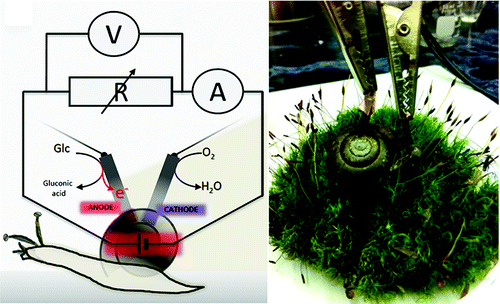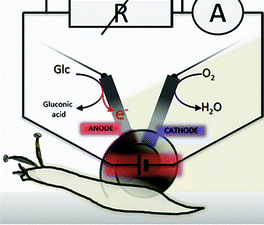
Sometimes I think researchers design experiments specifically to win an Ig Nobel prize. How else do you explain a paper titled “Implanted Biofuel Cell Operating in a Living Snail“? But regardless of the intention, that’s what a team of Israeli and American scientists has managed to do, according to a paper published comfortably in advance of April Fools’ Day in the Journal of the American Chemical Society.
The paper’s abstract states that “extraction of electrical power from small living creatures … has not been achieved to date.” Well, we certainly can’t let that stand! Start extracting electrical power from small living creatures immediately! Igor, throw the switch.
Basically, the biofuel cell runs off the snail’s blood glucose (“Partial restoration of the electrical output in real time was observed upon feeding the snail”). In other words, the battery is basically powered by normal snail metabolism — when the snail eats, its body produces glucose from the food, and the glucose powers both fuel cell and snail. It’s a process as sustainable as digestion. And the snails toted these batteries around for several months, supplying continuous power the entire time.
The snail cell seems to have pulled a maximum of about 350 millivolts, enough to do … well, basically nothing, really. But what do you expect? It’s a snail. If we could devise a fuel cell that ran off human blood glucose, though, we’d really be getting somewhere (especially in the U.S.). For instance, implanted medical devices could be designed to get their energy from body processes. Although I kind of prefer to imagine that in the future we will just charge all our devices using an army of snails.


